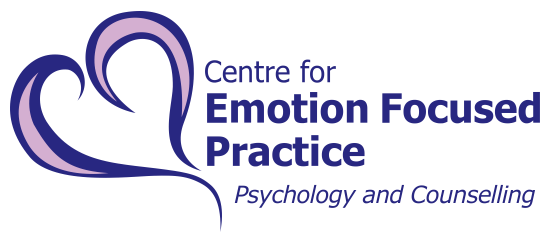Eating Disorders in Adolescence

To eat or not to eat? — Photo by daniellehelm
Adolescence is a challenging period of confusion and turmoil. As the children step into adolescence, they undergo not only physical changes but also emotional and social changes. Adapting successfully to these changes requires guidance and understanding on part of the parents.
As puberty approaches, adolescents tend to become increasingly conscious of their looks and figures. Many have models and actresses as ideals for their body image, while others have friends who emphasize the importance of a “good” figure. There are still others who are emotionally disturbed and manifest these disturbances in the form of an eating disorder. All these factors can lead adolescents to develop different forms of eating disorders.
What are Eating Disorders?
Eating disorders is a broad term used to describe a range of illnesses characterized by the misuse of food and a corresponding negative physical impact on the body. These disorders include anorexia nervosa (denial of food), bulimia (a pattern of binging and purging), and overeating (or binge eating disorder).
Eating disorders entail severe disturbances in eating behaviour. People with eating disorders tend to follow rigid diets, frantically count calories, binge on food secretly and throw up after meals. However, eating disorders go beyond just unhealthy dietary habits. Eating disorders actually stem from distorted, self-critical attitudes about food, body image, and weight. These negative feelings and thoughts form the core of these damaging eating behaviours.
Some adolescents with eating disorders resort to unhealthy food and eating habits to combat uncomfortable and painful emotions. When they restrict food, they feel in “control”. On the other hand, overeating (emotional eating) temporarily serves to relieve anger, sadness, worry or loneliness. Some adolescents purge after binging on comfort foods in order to deal with the feelings of helplessness and self-hatred that their unhealthy snacking evoked. As time passes, people with these disorders fail to see themselves objectively and their obsessions and compulsions with food and weight take control over all aspects of life.
Prevalence of Eating Disorders
Eating disorders, although not absent in men, are more common in females who are in their teens to early 20s. However, this disorder is not age-specific; eating disorders may be present in older men and women too. Eating disorders have been present since the beginning of time. However, records indicate that eating disorders began to occur with alarming frequency in the late 1960s. The numbers have continued to rise since then. In the 1970s, bulimia emerged in large proportions in many developed countries, including Australia. Similarly, a continued increase was also noted in anorexia in developed nations, suggesting that eating disorders are directly linked with cultural contexts. It is estimated that eating disorders affected almost 1 million Australians by the end of 2012 (The National Eating Disorders Collaboration (2012). An Integrated Response to Complexity – National Eating Disorders Framework 2012).
Importance of Early Intervention
It is vital to diagnose and intervene early if an adolescent develops an eating disorder. Adolescence is an important period in physical development. There are developments in height, weight, hormonal functioning and brain growth. An eating disorder will lead to severe forms of malnutrition and thus greatly hinder the developmental progress if the nutritional needs are not met. Growth retardation, pubertal delay, and impaired bone mineral acquisition are often diagnosed at the sub-clinical levels of eating disorders.
In addition, eating disorders interfere with adjustment to puberty and acquiring developmental tasks which are necessary for becoming a healthy, fully-functioning adult. Also, teenage is the time when habits are formed; if eating disorders are not diagnosed and intervened early, they are likely to become a permanent feature in their lives.
As adolescents are living with their families, it is of prime importance that the parents become aware of their child’s eating habits and notice any negative patterns in eating or any of the warning signs of disorders. If they do notice these signs, parents or caregivers should intervene at their earliest.
How to Detect an Eating Disorder in an Adolescent?
In the beginning, it can be difficult to differentiate between an eating disorder and a normal self-conscious attitude towards food, weight and body image. Nonetheless, as the eating disorder advances, the warning signs will become more conspicuous. However, an adolescent or individual with an eating disorder will take strong measures to hide the problem. So it’s important to be aware of these red flag behaviours.
Dieting or Restricting Food: The most evident warning signs of eating disorders are limited or restricted eating behaviours. An adolescent with an eating disorder may regularly miss out meals or make excuses to evade eating. When they do eat, they would take small servings, or eat only specific low-calorie foods and would compulsively count calories, examine food labels and weigh the food portions. They may also take diet pills in order to limit their appetite.
Binge Eating: Some adolescents who have eating disorders may eat normally around others but indulge in binge eating secretly; usually in a private spot or late at night, where they would not be seen or disturbed. Red flags for bingeing entail stacked or hidden piles of empty food packages and wrappers, cupboards or refrigerators that have been cleaned out, and a hidden stash of chocolates or other high-calorie food or junk food.
Purging: Adolescents with eating disorders may “purge” by fasting, exercising vigorously, throwing up or using laxatives. Warning signs of purging include vanishing after meals and making frequent trips to the bathroom. If an adolescent is vomiting, he/she may run the water to muffle the sound. They are also likely to use breath fresheners, mouthwash or perfume to disguise the smell.
Body Image: Body image may also give an insight into eating disorders. Significant weight loss, quick weight gain, and continuously fluctuating weight can all be warning signs of an eating disorder.
Distorted self-image, obsessive and persistent worry about weight, complaints about being fat despite a noticeably dwindling frame, spending hours at the mirror, examining and disapproving of body image are all significant indicators of the presence of an eating disorder.
Counselling and Psychotherapy for Eating Disorders at the Centre
To get an appointment or to make enquiries, please call (03) 9820-5577.




